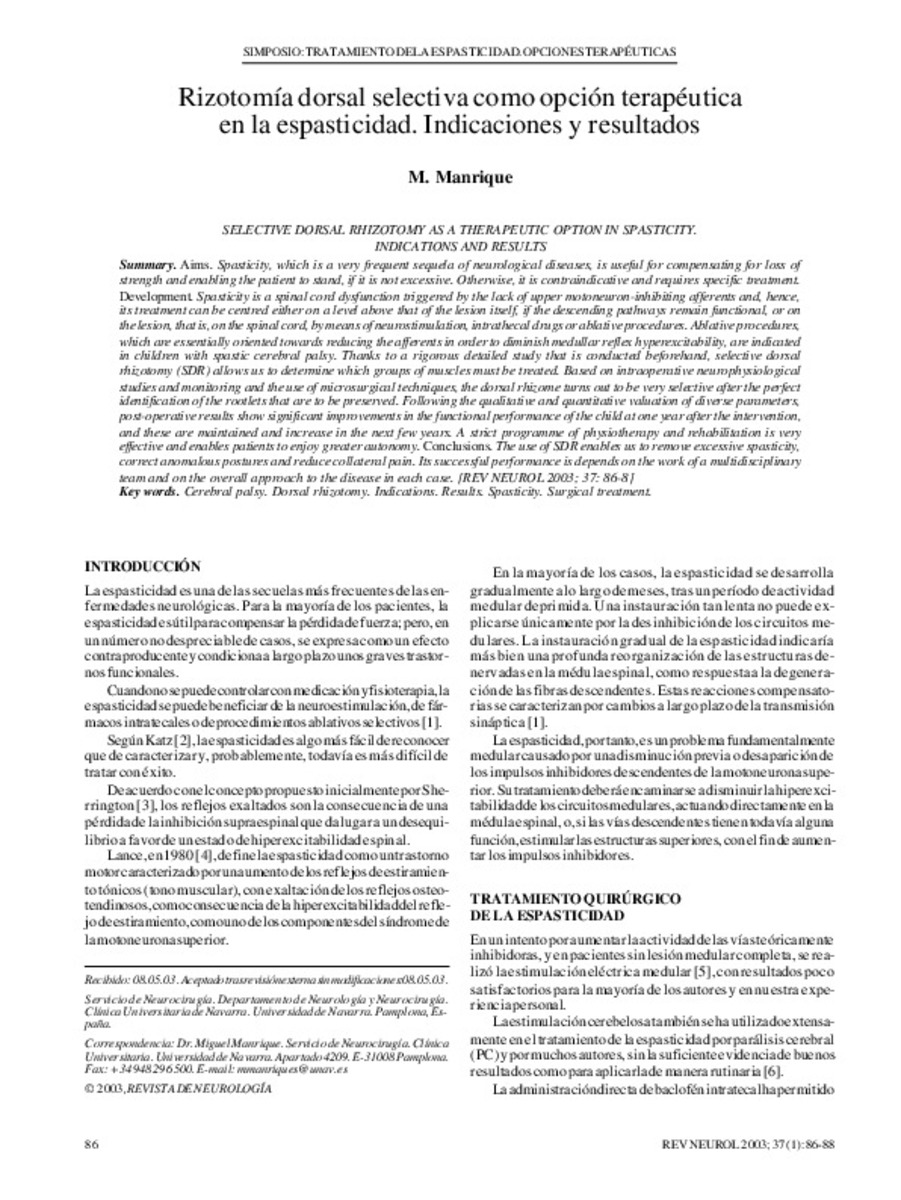Rizotomía dorsal selectiva como opción terapéutica en la espasticidad. Indicaciones y resultados
Otros títulos :
Selective dorsal rhizotomy as a therapeutic option in spasticity. Indications and results
Palabras clave :
Muscle Spasticity/surgery
Rhizotomy
Spinal Cord/surgery
Fecha de publicación :
2003
Editorial :
Viguera Editores
Cita:
Manrique M. Rizotomía dorsal selectiva como opción terapéutica en la espasticidad. Indicaciones y resultados. Rev Neurol 2003 Jul 1-15;37(1):86-88.
Aparece en las colecciones:
Estadísticas e impacto
0 citas en

0 citas en

Los ítems de Dadun están protegidos por copyright, con todos los derechos reservados, a menos que se indique lo contrario.







